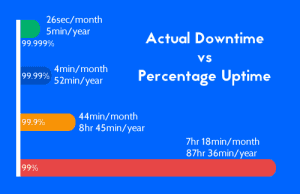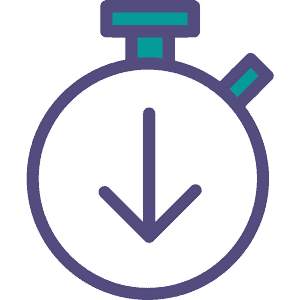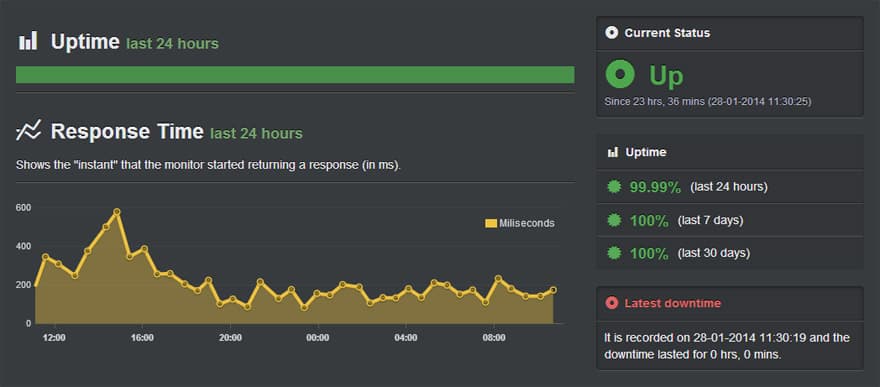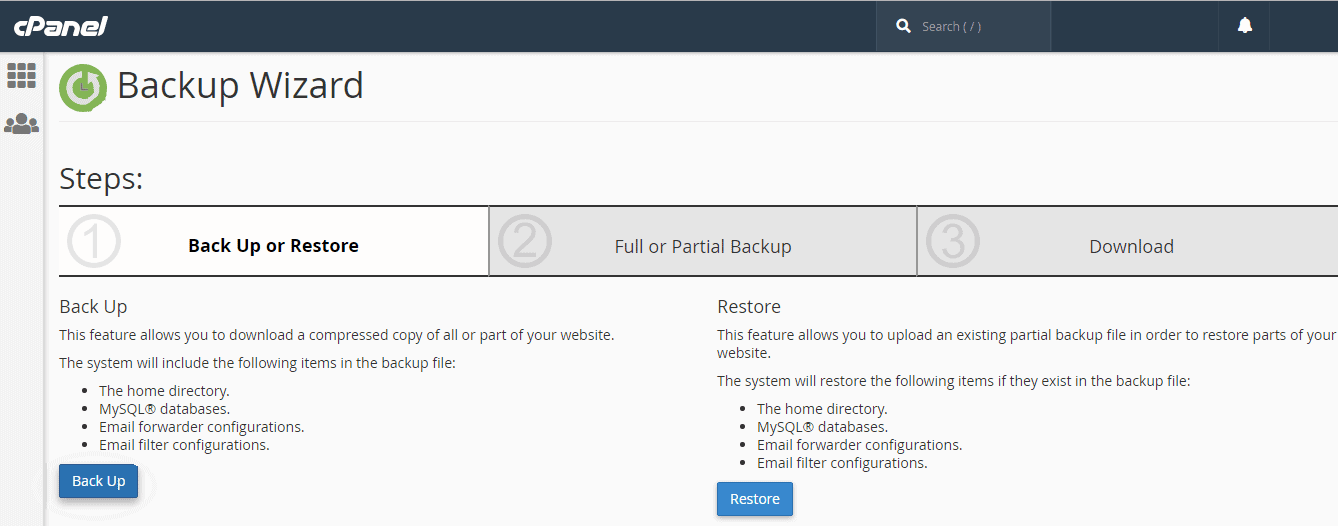What is Website Downtime Really Costing You?
 Can your business afford to lose $100,00 or more in one shot? Most companies can't. But, that's what it costs, on average, any time your website goes down for an hour.
Can your business afford to lose $100,00 or more in one shot? Most companies can't. But, that's what it costs, on average, any time your website goes down for an hour.
Even huge corporations are susceptible to issues, as revealed by a Prime Day glitch that cost Amazon an estimated $72 to $99 million
The issue caused thousands of angry customers to threaten cancellation of their Prime memberships.
Downtime can cause you to lose more than money, and the final cost can be difficult to calculate. What are the main causes of website downtime, can they be prevented, and what are the hidden costs?
What Does Downtime Mean?
 Downtime is inevitable. It's defined as any portion of time that your network or website is completely out of commission.
Downtime is inevitable. It's defined as any portion of time that your network or website is completely out of commission.
Web servers calculate downtime as a percentage in relation to periods when everything is up and running properly.
Some downtime is unavoidable under the best of circumstances, but most servers and web hosting companies try to aim for a maximum of one percent or less.
What Causes Downtime?
Some causes of system downtime are beyond your control, but many of them are preventable. Regardless of why your website or server goes down, the resulting injury to your business is the same.
Knowing what causes networks to crash gives you a head start on creating a prevention and resolution plan, and it reduces the amount of fallout for those times when they can't be prevented.
Server Reboots or Maintenance
It's inevitable that a network, server, or website has limited periods of downtime for maintenance and upgrades. These are usually planned and of short duration, and warning is given to clients in advance.
Network Outages and Disconnects
An accidentally disconnected cable, unpaid bill, or other human error can disrupt the connection between the client and server.
Traffic Overloads
Sudden, unpredictable traffic spikes, either caused by visitors to your websites or from resource hogging by others on the same server, can lead to anything from reduced page load times to a total system crash. They can also be caused by direct denial of service (DDoS) attacks.
Hardware or Software Failures
These are usually due to inadequate, obsolete, or poor-quality infrastructure, equipment, or software.
Power Outages
Whether it's due to a surprise storm or man-made causes, these are difficult to predict. Fast recovery is essential to contain the damage.
Cybercrime
Due to hacking, computer viruses, and ransomware exploits. These are usually an external threat, but they can be initiated internally through corporate espionage or a disgruntled employee.
If you can't prevent downtime completely, you can at least try to reduce the length of time your website or server is down and have a plan in place to mitigate the damage.
The True Cost of Downtime
The total cost of downtime can be divided between tangible costs, which are provable, concrete losses, and intangible costs that are more difficult to calculate. They may be harder to overcome as well.
Tangible Downtime Costs

These are losses that you can measure or at least gain a reliable estimate of the totals.
They're normally couched in financial terms that are provable, but you can also add in the loss of unique traffic and first-time website visitors by using analytics and comparing them to previous business cycles for that date or time period.
Lost Revenue
Many of the big headlines over the past few years have been regarding the monumental losses that large corporations and other organizations have incurred.
However, downtime hits small to medium businesses (SMBs) harder and more frequently, and they have the toughest time with recovery.
Calculating revenue loss per hour of downtime requires using a simple equation. Take your average quarterly revenue for the same time period the previous year, and divide that number by 2160; that's the total number of hours in a 90-day period.
Recovery Costs
In order to gain a more complete picture of your direct, measurable financial losses, you need to determine how much it will cost to recover. Will you need to replace hardware or software?
Do you need to replace entire web pages? Did you have backups of your data? What about the cost of hiring a reputation management firm, marketing team or web designer, or contractor? You'll also need to think about payroll increases while your staff works to mitigate damage.
Intangible Cost of Downtime
 It's more difficult to put an exact number on these losses, and the effects may take longer to feel than immediate financial losses.
It's more difficult to put an exact number on these losses, and the effects may take longer to feel than immediate financial losses.
Depending on how long the shutdown lasted, the cause, and how it affected individual customers, such as through data leaks or stolen information, they may even be insurmountable.
Opportunity
How many current and potential customers or sales did you lose while your website was down? That's something you may never know for sure, but you can estimate it by analyzing your sales and traffic for similar time periods.
New visitors who don't know your brand could think that you're unreliable, which will affect your reputation.
Brand Perception
![]() Anything that diminishes your brand in the eyes of the public does damage.
Anything that diminishes your brand in the eyes of the public does damage.
In these days when everyone has a website and you have to compete with hundreds of similar businesses, it's nothing for all but the most loyal customers to move on to another company.
Downtime also reduces trust, especially if it's of long duration or due to an attack. People want to know that they can count on you to be there when they need you, and that their information is safe.
Productivity and Moral
As frustrating as it is when a customer can't access your website, it's also hard on your staff. A service disruption can grind your business to a halt and commandeer time that could be spent manufacturing products, conducting business, and making sales.
Loss of customers or business can also be demoralizing to you, your staff, and customers. If your business is forced to close, it's devastating.
Search Engine Ranking
 Long periods of downtime doesn't just affect your current ranking.
Long periods of downtime doesn't just affect your current ranking.
You'll have to work harder, and possibly re-think your SEO strategy, in order to regain your footing. Dropping in the SERPs also means that new customers are less likely to discover your website.
This can take months to undo, and you may incur more expenses if you have to retain an SEO company or specialist to get you back to your previous level.
How to Calculate the Cost of Downtime to Your Organization
There is no set cost when it comes to loss. The end result varies by the type of industry you're in, how many people are actually affected by the loss, and even the day of the week or time of day. For example,
When you take all factors into consideration, you'll have a more complete picture of how much downtime will cost your eCommerce website.
You can also estimate the total amount of regular, unavoidable downtime that your website averages at any given time. There are monitoring services that can help you track numbers that are specific to your website or server.

By using a calculator to determine the amount of uptime you enjoy, you can reverse engineer these figures to determine your average monthly downtime and minimize it's impact.
For example, an uptime of 98 percent for one month translates to 29 days, 9 hours, and 36 minutes, which leaves you with a figure of 14 hours and 24 minutes of downtime. Uptime figures of 99.9 percent will result in a total of 43 minutes of downtime during the month.
Most web hosting services post their percentage of uptime on their website, or you can find this information in your analytics reporting.
How to Choose a Host With Great Uptime
When it comes to hosting 99.9% uptime is the name of the game. Companies like SiteGround and HostGator pride themselves on great performance.
It's important to due the research if you're looking at building an online store or small business website. Read our guide to the best Australian hosts and we can help you navigate through the murky waters of uptime/downtime monitoring.
Reducing the Effects of Downtime
Since downtime is unavoidable, and even one minute can cost your business, it's essential to do everything you can to control the amount of fallout and financial loss.
Have a Backup and Restoration System in Place
Most servers or hosting companies do provide system backups, but they're not necessarily accessible to you.

Having your own backup system in place will reduce recovery time and expense by allowing you to restore lost pages and data in seconds rather than needing to rebuild from scratch. There are apps available that are designed for this specific purpose.
Stay Updated
If your hosting provider or domain registrar has an auto-renew feature, use it. You should also set up auto-pay schedule for any software or services that could result in network disconnections or other disruptions if they're not paid on time.
Choose a Secure Hosting Platform
Choose hosting solutions that provide state-of-the-industry privacy and security like SSL and strong encryption.
Put Extra Security in Place
Do your part by training employees in security and data preservation best practices, by using to most current anti-spyware and anti-virus programs, and by keeping all software, infrastructure, and equipment updated.
Set Goals for Risk Mitigation
Shoot for minimum percentages of downtime and disruptions as well as recovery time. Accept whatever risk you can't control, and put resources toward reducing those liabilities that you can. Set realistic recovery time objectives (RTO) and recovery point objectives (RPO) that your company can live with.
Key Takeaways:
- Downtime happens to almost all servers at some point.
- There are many causes, and most are avoidable.
- Downtime causes a loss of money, reputation, and productivity.
- The average amount of downtime after a typical DDoS attack is nine hours.
- You can reduce downtime by being proactive.
The Bottom Line
Any amount of downtime is too much; even a minute offline can cause you to lose customers. Most downtime is calculated in relation to lost revenue. But, there are other costs that cause incalculable damage. You can never completely avoid downtime, nor can you transfer the cost.
The choices are to limit your exposure and possible losses. The key to prevention is to anticipate the possible dangers, minimize the risks, and have a comprehensive recovery plan in place.


